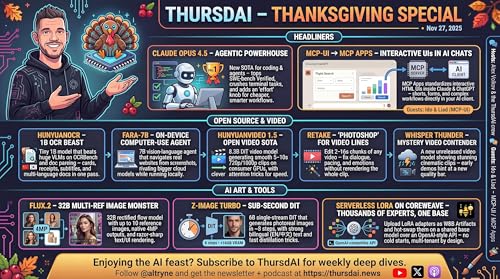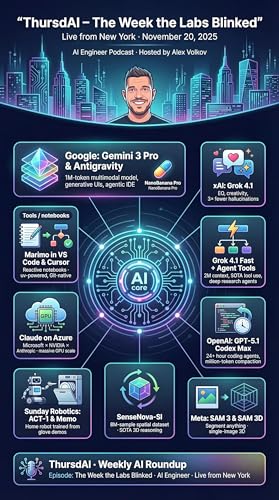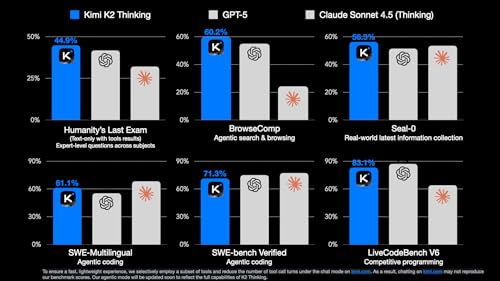Hey, Alex here,
I recorded these conversations just in front of the AI Engineer auditorium, back to back, after these great folks gave their talks, and at the epitome of the most epic AI week we’ve seen since I started recording ThursdAI.
This is less our traditional live recording, and more a real podcast-y conversation with great folks, inspired by Latent.Space. I hope you enjoy this format as much as I’ve enjoyed recording and editing it.
AntiGravity with Kevin
Kevin Hou and team just launched Antigravity, Google’s brand new Agentic IDE based on VSCode, and Kevin (second timer on ThursdAI) was awesome enough to hop on and talk about some of the product decisions they made, what makes Antigravity special and highlighted Artifacts as a completely new primitive.
Gemini 3 in AI Studio
If you aren’t using Google’s AI Studio (ai.dev) then you’re missing out! We talk about AI Studio all the time on the show, and I’m a daily user! I generate most of my images with Nano Banana Pro in there, most of my Gemini conversations are happening there as well!
Ammaar and Kat were so fun to talk to, as they covered the newly shipped “build mode” which allows you to vibe code full apps and experiences inside AI Studio, and we also covered Gemini 3’s features, multimodality understanding, UI capabilities.
These folks gave a LOT of Gemini 3 demo’s so they know everything there is to know about this model’s capabilities!
Tried new things with this one, multi camera angels, conversation with great folks, if you found this content valuable, please subscribe :)
Topics Covered:
* Inside Google’s new “AntiGravity” IDE
* How the “Agent Manager” changes coding workflows
* Gemini 3’s new multimodal capabilities
* The power of “Artifacts” and dynamic memory
* Deep dive into AI Studio updates & Vibe Coding
* Generating 4K assets with Nano Banana Pro
Timestamps for your viewing convenience.
00:00 - Introduction and Overview
01:13 - Conversation with Kevin Hou: Anti-Gravity IDE
01:58 - Gemini 3 and Nano Banana Pro Launch Insights
03:06 - Innovations in Anti-Gravity IDE
06:56 - Artifacts and Dynamic Memory
09:48 - Agent Manager and Multimodal Capabilities
11:32 - Chrome Integration and Future Prospects
20:11 - Conversation with Ammar and Kat: AI Studio Team
21:21 - Introduction to AI Studio
21:51 - What is AI Studio?
22:52 - Ease of Use and User Feedback
24:06 - Live Demos and Launch Week
26:00 - Design Innovations in AI Studio
30:54 - Generative UIs and Vibe Coding
33:53 - Nano Banana Pro and Image Generation
39:45 - Voice Interaction and Future Roadmap
44:41 - Conclusion and Final Thoughts
Looking forward to seeing you on Thursday 🫡
P.S - I’ve recorded one more conversation during AI Engineer, and will be posting that soon, same format, very interesting person, look out for that soon!
This is a public episode. If you'd like to discuss this with other subscribers or get access to bonus episodes, visit sub.thursdai.news/subscribe
 1 h et 34 min
1 h et 34 min 46 min
46 min Nov 27 20251 h et 21 min
Nov 27 20251 h et 21 min 1 h et 29 min
1 h et 29 min Nov 13 20251 h et 10 min
Nov 13 20251 h et 10 min 1 h et 33 min
1 h et 33 min 1 h et 37 min
1 h et 37 min Oct 24 20251 h et 35 min
Oct 24 20251 h et 35 min
